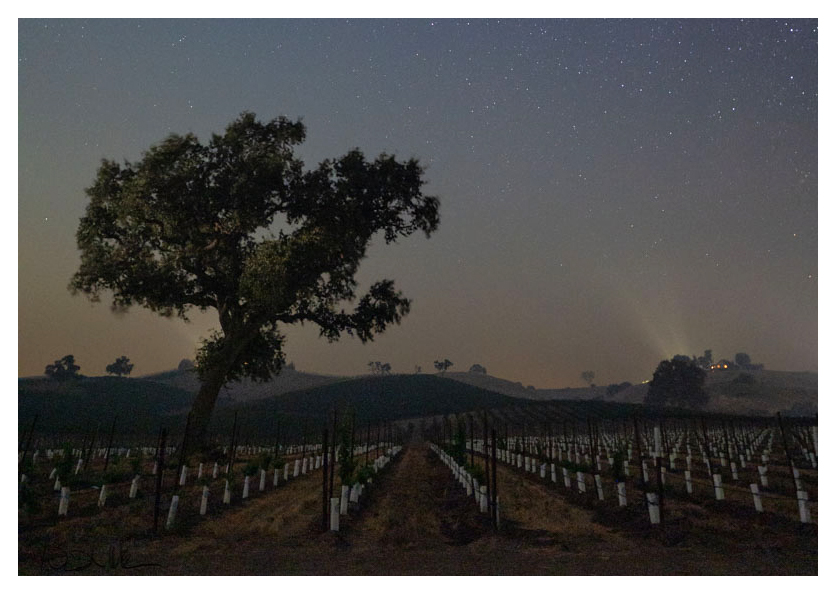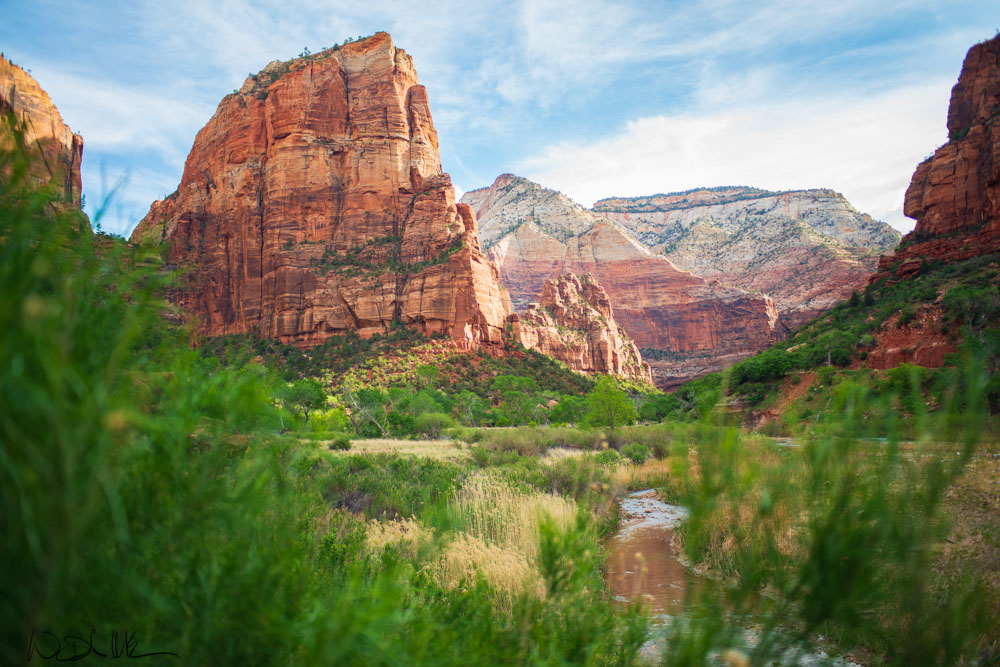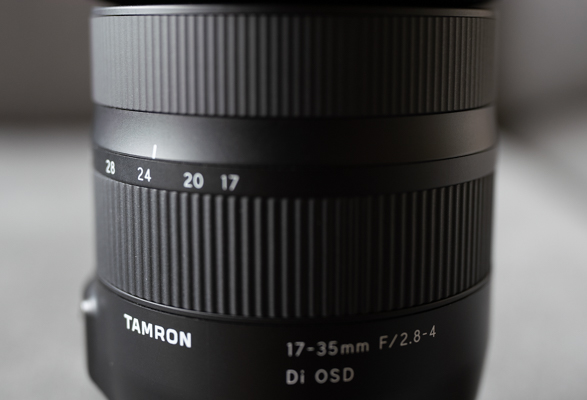Nicknamed the “city of lights,” Las Vegas is actually the brightest spot on the planet from space. Fortunately, Las Vegas is also an island in the middle of a desert, so there are plenty of places to explore nearby for stargazing and astrophotography.
Any light pollution map shows a color grade for mapping the best and worst locations for the night sky. If you look at Las Vegas, the center is white. As you move further away from the city the colors change to red, orange, yellow, green, and blue. The best locations near Las Vegas for astrophotography or stargazing are usually listed as yellow, green, or blue.
I’ve found decent locations to photograph the night sky in the orange area, but the Milky Way is best seen on the map locations that range from yellow, green, and blue.
Astrophotography minutes from the Las Vegas strip
Red Rock and Spring Mountain Ranch State Park
One of my favorite places to photography the night sky is just a 20 min drive for the Las Vegas strip at Red Rock Canyon. The scenic loop closes in the early evening, but there are still beautiful places nearby.
The Bonnie ranch area (now closed) is also beautiful for viewing the night sky. There’s a horse trail, rarely used, just off blue diamond road headed North toward Bonnie’s ranch that has great hiking and some of my favorite views of red rock. Pull off to the left to see the small parking lot.
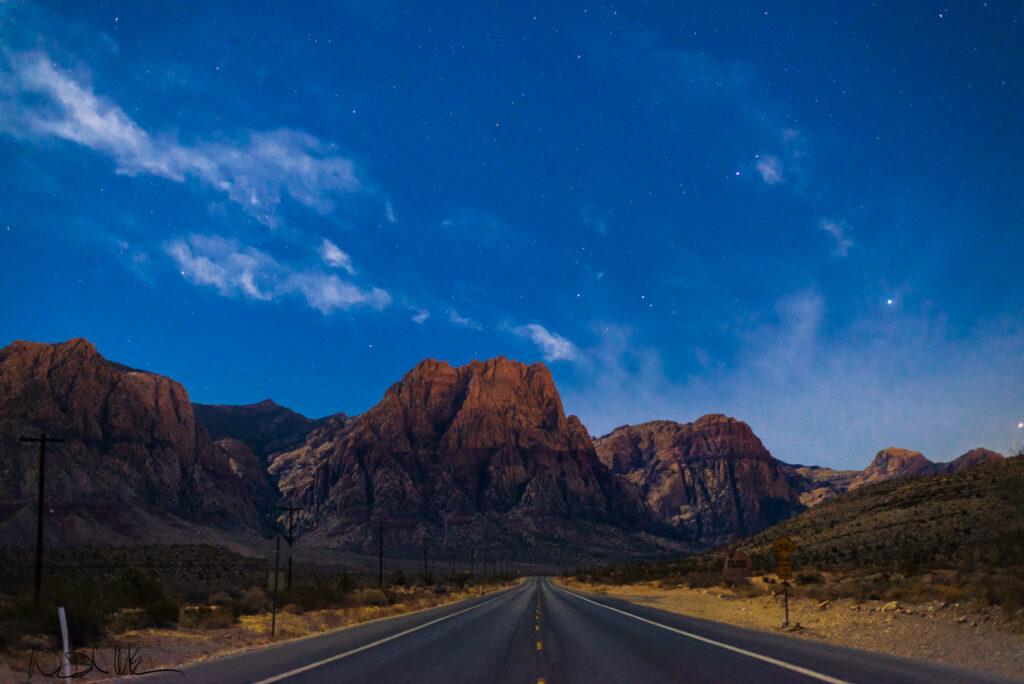
Valley of Fire #3
If you have more time, Valley of Fire is about 45 minute from the Las Vegas strip. This is in a green area on the light pollution map which means you can see and capture the Milky Way. The arches here can’t compete with Arches National Park, but there are endless rock formations that can add an interesting foreground to your nightscapes.
Photographing the Dark Skies at Death Valley
Indian Springs #4
From Las Vegas, there are two different ways to get to Death Valley. If you head North just past Indian Springs, there’s a side road on the left where you can view the Milky Way core in the Southwest.
The further you go, the darker the sky. There’s not any big cities this direction, so this is the closest place to really start seeing dark skies. This area past Indian Springs is green and blue on the light pollution map.
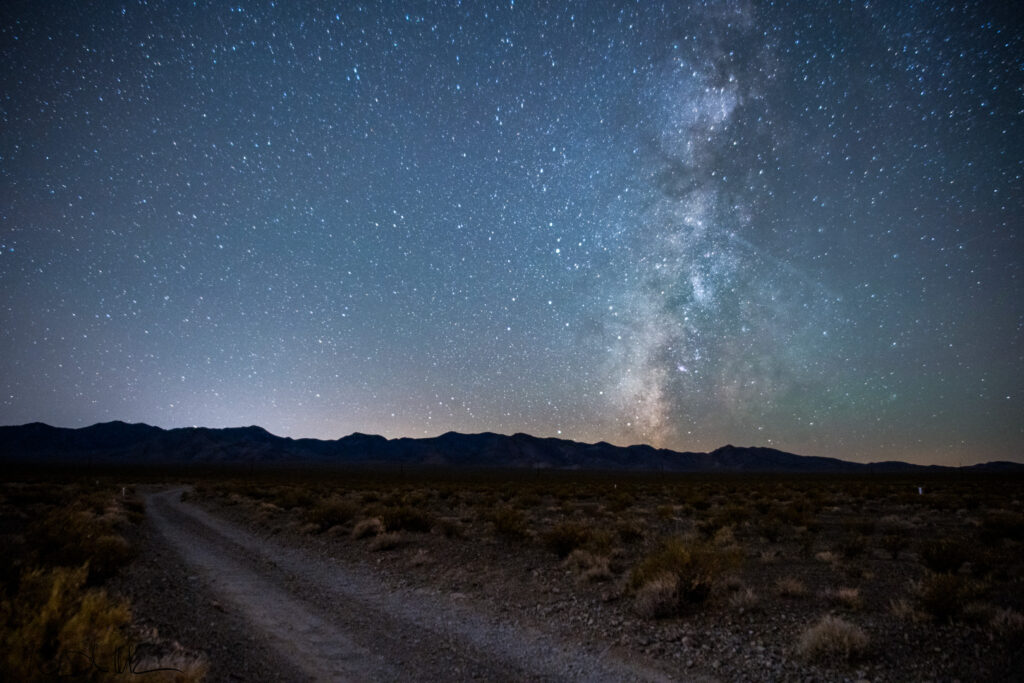
Once you make the turn off to Death Valley you will see a straight road for miles as it heads into the mountains. This is a great place to pull off for a photograph before you descend to the national park.
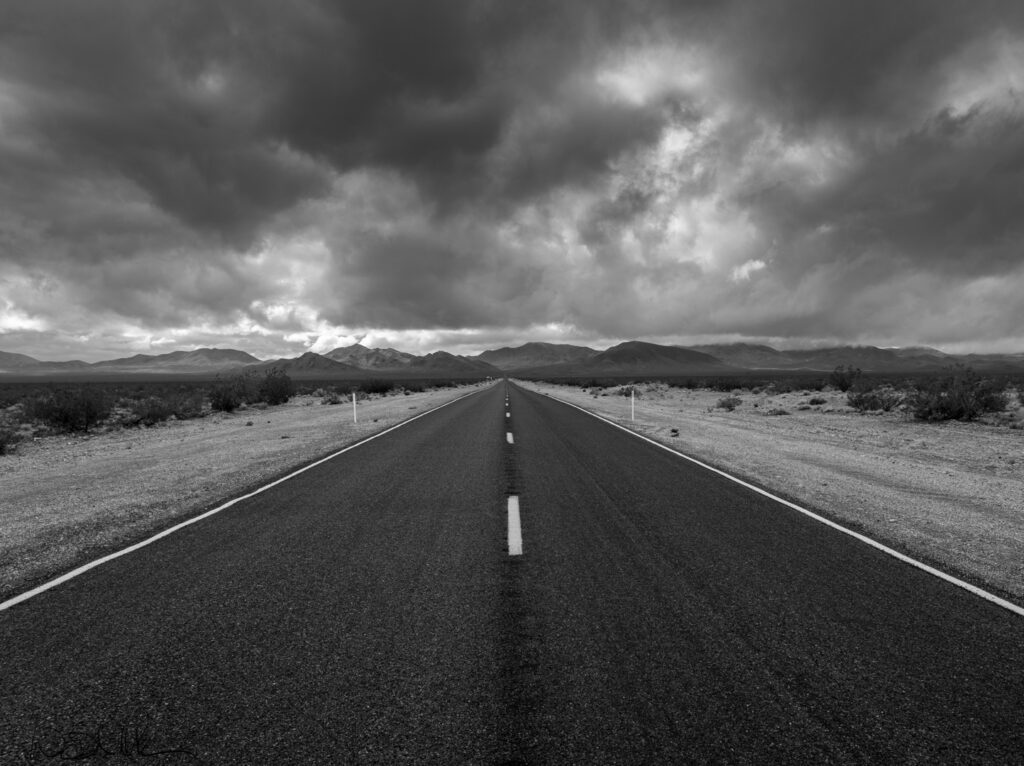
Death Valley #5
In all my years of living in Las Vegas I only visited Death Valley a few times. I didn’t come to love it until my last visit to the park at the time of a storm. Death Valley really shines under these conditions, but they come only a few times a year.
Fortunately, the rest of the year has mostly clear skies and is perfect for astrophotography. I think anyone could easily spend a week here scouting out locations to photograph the Milky Way and night sky. There is so much variation of vast desert landscape here.
It’s also an easy place to find affordable accommodations and camping. Here are my recommended areas to shoot:
- Bad water Basin
- Zabriskie Point
- Dante’s View
- Mesquite flat dunes
Astrophotography at Grand Canyon and Page Arizona
Grand Canyon National Park, in recent years, has implemented measures to become a dark sky location. On my recent visit to the Grand Canyon, I was surprised that I didn’t see any of the city lights while visiting the park. The city has created ordinances to cut down on light pollution, and it’s a great place to photograph the night sky.
Driving another 1.5 hours and you’ll be in Paige, Utah near lake Powell and horseshoe bend. There are multiple areas in Page that offer astrophotography. Glen Canyon is one of them. Also nearby is Antelope Canyon. I took this photo by combining multiple photos all taken with a 24mm lens at horseshoe bend.
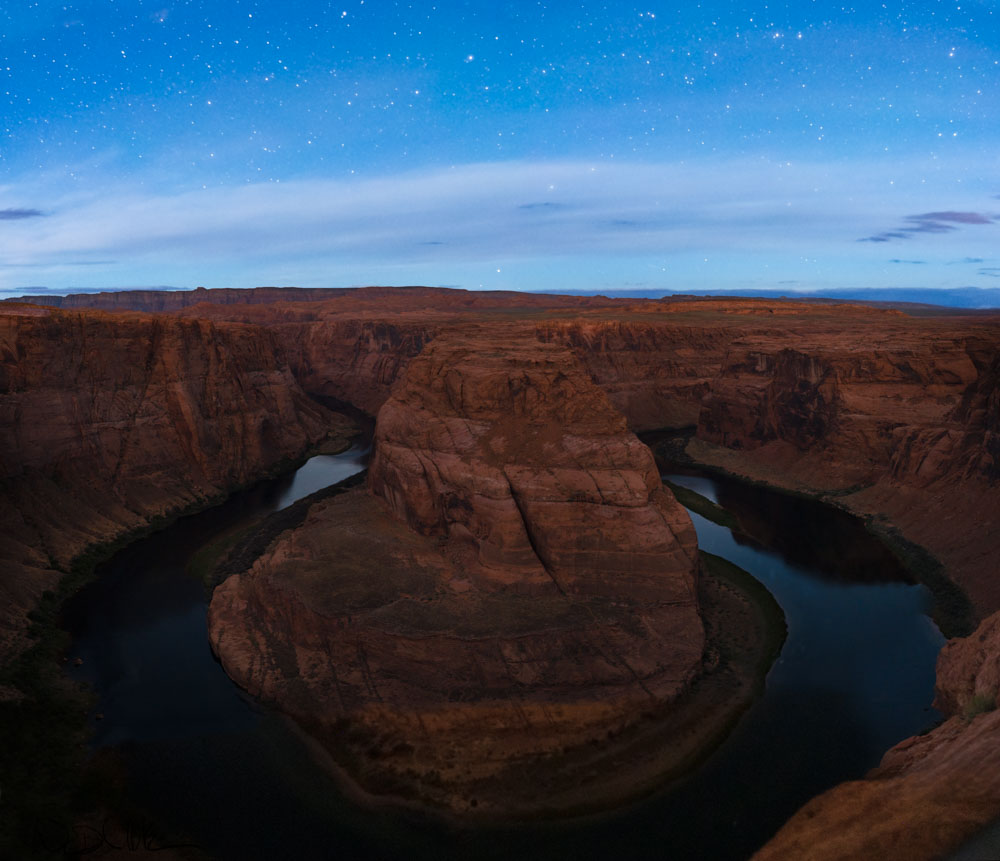
Other Astrophotography Locations
- Zion National Park
- Monument Valley
- Havasupai
- Mohave National Preserve
- Joshua Tree
People come from all over the world to see the Las Vegas lights, but the best lights are just outside the city. I think when you’re surrounded by light pollution you develop a greater appreciation for dark skies. Hopefully this will give you better idea of where you can find these beautiful locations near Las Vegas.

